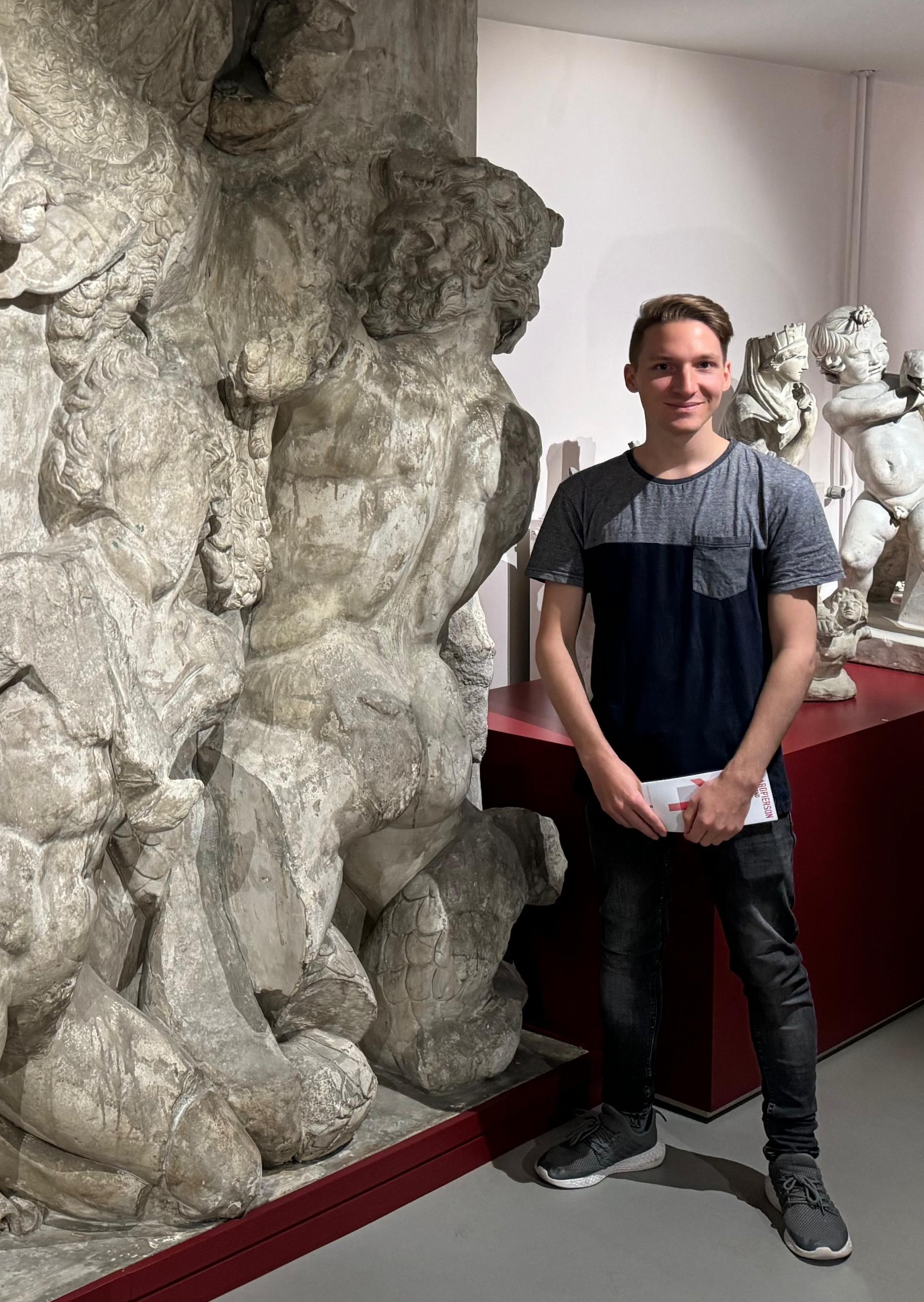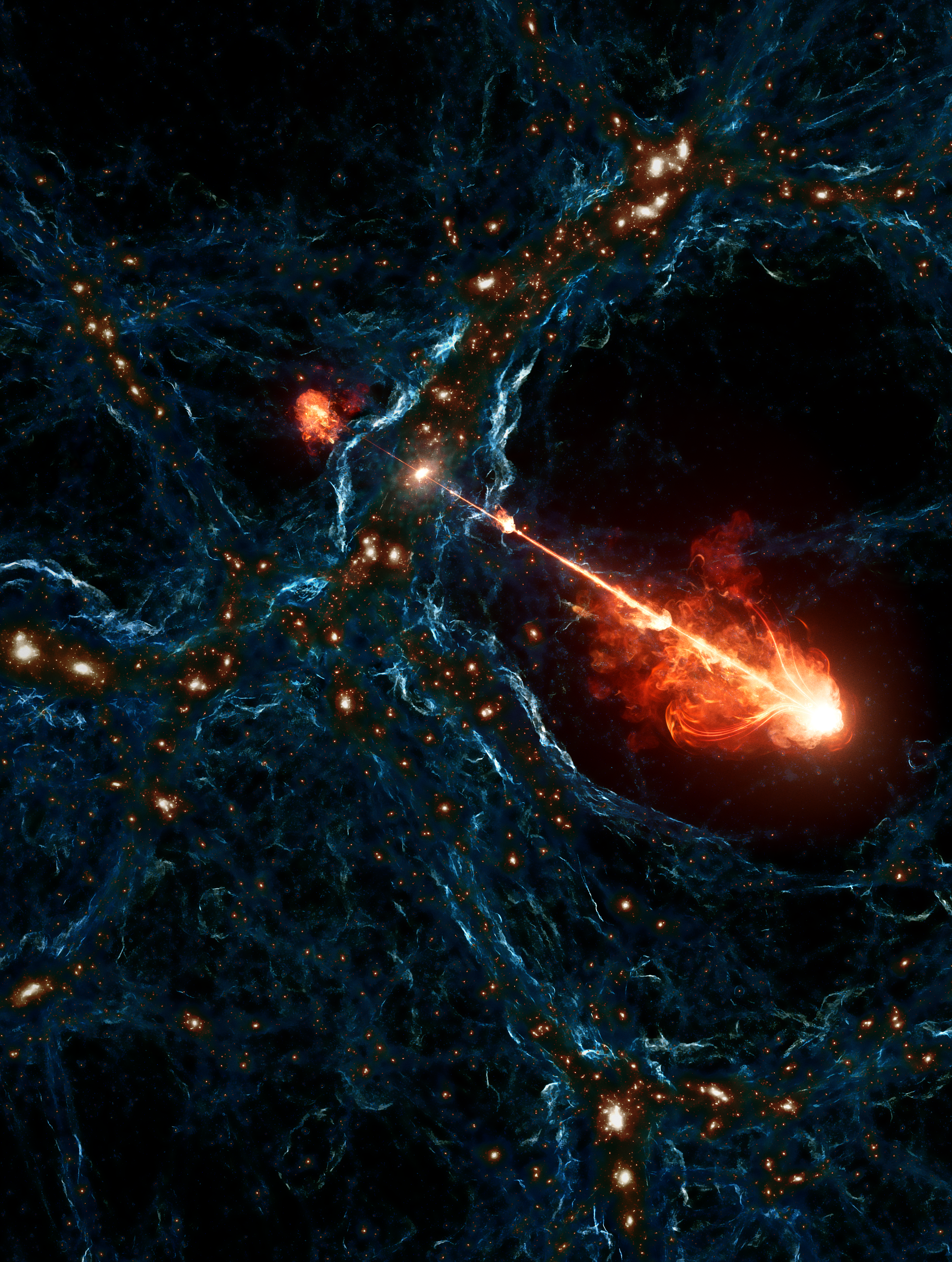Student classicist plays part in discovery of the biggest black hole jets ever seen
“I searched the sky for giant radio outflows and their host galaxies. Among them was Porphyrion”
A St John’s classicist-turned-astronomer has helped discover and name a gigantic pair of black hole jets – the largest seen in the universe.
Aivin Gast, who has just begun his MPhil in Heritage Studies at St John’s, was part of the international research team that identified and named the gargantuan fountains of plasma and particles shooting from above and below a supermassive black hole.
Together the jets, which are named Porphyrion after a giant in Greek mythology, are the size of about 140 Milky Ways lined up back-to-back with the power of trillions of suns, at the heart of a remote galaxy.

Aivin is co-author of a research paper on the space megastructure that featured on the front cover of Nature.
“I searched the sky for giant radio outflows and their host galaxies. I compiled a list of data, which the project team could use to determine which giant radio galaxies were already known: most of them were new. Among them was Porphyrion,” said Aivin.
Aivin was a Classical Archaeology and Ancient History undergraduate at Somerville College, Oxford, when he met Dr Martijn Oei, astrophysicist and lead author of the paper, at a Dutch Society event. Aivin began working as a research intern at the Leiden Observatory under Dr Oei, now a postdoctoral Fellow at Caltech, during the Covid pandemic.
He was tasked with manually looking for giant radio galaxies using a vast number of new images taken by the Low Frequency Array (LOFAR) telescope network in the Netherlands, creating data that could be used by Dr Oei and his team to search for new structures.
Aivin named Porphyrion after the king of the giants in Greek myththology who waged war on the gods. He also named an earlier discovery – an enormous radio galaxy – ‘Alcyoneus’ in honour of the giant who fought against the hero Heracles for supremacy over the cosmos.
Astronomers suggest that in the early universe Porphyrion may have influenced the formation of galaxies to a greater extent than previously believed, perhaps even affecting the evolution of the universe.

The jets span roughly seven megaparsecs, or 23 million light-years, and date to when our universe was 6.3 billion years old, less than half its present age. Black hole jet systems are also sometimes referred to as radio galaxies; however, the term can be misleading, as the jets are no longer part of the galaxy itself.
“It feels very special to have contributed to this study,” said Aivin. “Sometimes, it’s useful to have someone with a different background in your team. I like to broaden my horizons, so I enjoyed this journey a lot.”
Radio galaxies are galactic eruptions that are extremely luminous at radio wavelengths. At the centre of many galaxies lies a supermassive black hole. The black hole can create two jet streams, which catapult the building material of new stars out of the galaxy at almost the speed of light. In this violent process, the stardust heats up so much that it dissolves into plasma and emits light, including radio waves.
These waves are what can be seen and recorded by the LOFAR telescope network, which is how Dr Oei and his team were able to identify the structures.
“What I found really cool was following the whole research project right up to publication and outreach,” said Aivin. “As Martijn and I are good friends, it was easy to quickly exchange ideas and give him my non-expert opinions. When I saw this radio ‘blob’ on the image for the first time in my Somerville room, it was hard to imagine that it would grace the cover of Nature.”
Aivin has been delighted to be a part of astronomy history but is for now keeping his feet firmly on the ground.
“It was an exciting journey, but for my own career I prefer to ‘stay on Earth’. After graduating from Oxford, I studied international cultural relations in Italy and Germany and I am very excited to start my MPhil in Heritage Studies at St John’s. It’s a unique degree and St John’s looks like the best place to be.”
Published: 11/10/2024